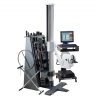
Carpal Tunnel Syndrome: Non-surgical Treatment Techniques
Treatment GuidelinesDespite the ubiquity of CTS, we often see patients undergoing surgery after failing conservative care. As rehab professionals, are we doing everything we can to help these patients recover without surgery?
Carpal Tunnel Syndrome (CTS) is perhaps one of the most well-known conditions amongst both the medical and the lay population. In fact, it’s estimated that roughly 4-5 percent of the world population currently suffers from Carpal Tunnel Syndrome.1
Despite the ubiquity of CTS, we often see patients undergoing surgery for this condition after failing conservative care.2 This brings to mind the question: as rehab professionals, are we doing everything we can to help these patients recover without surgery?
In this article, I’ll attempt to highlight some of the key points about CTS as they relate to its treatment. Hopefully, this information can improve outcomes so our clients can avoid resorting to surgical intervention.
Non-surgical Treatments for CTS
As rehab professionals, we need to look for creative and effective ways to help patients reduce pain, improve function, and overcome their musculoskeletal conditions. Hopefully, we can do this without the patient needing surgery.
Often, CTS can be effectively managed with corticosteroid injections. However, many patients would prefer to avoid surgery, injections, and medication.
For this reason, we’ll look at some of the current understanding of the non-surgical treatment options for CTS.
CTS Treatment with Exercise
Exercise has long been a mainstay for the rehab professional. Regardless of the condition, most patients will benefit from prescribed exercise. When it comes to CTS, nerve flossing, strengthening, and flexibility exercises are key.3, 4,
Nerve Flossing
Much like the name sounds, nerve flossing is the act of gliding nerves back and forth through specific body motions. By alternating tension on the proximal and distal points of a nerve, the patient can free the nerve from tightness or restrictions.
For CTS specifically, median nerve flossing can often provide symptom relief in the short term, and it may improve outcomes in the long run as well when combined with other effective treatments.5
Strengthening Exercise
Because Carpal Tunnel Syndrome results from a shortening of tissues on the anterior side of the wrist and hand, strengthening those on the posterior side can help to counteract the issue.
Extensor strengthening using bands and other tools can be very helpful for reducing symptoms. Plus, performing strengthening exercise for all muscles of the hand and wrist will keep these muscles from losing too much mass, especially if they are denervated due to the CTS.3
Flexibility Exercise
Increasing mobility and flexibility in the wrist and hand can help to create space within the areas associated with CTS.4 Prayer stretches and similar wrist extension movements often provide relief for these patients.
Manual Therapy
Manual therapy is an important part of many different treatment plans for various orthopedic conditions. This treatment modality can assist in releasing restricted tissue, decreasing pain, and potentially even increasing blood flow to injured areas.6, 7
Soft Tissue Mobilization (STM)
STM refers to a variety of manual techniques that can release tight muscles, relieve trigger points, and generally improve outcomes in some patients. Transverse friction massage is one effective STM technique for reducing restrictions present with this condition.
Joint Manipulation / Mobilization
There is some evidence for the effectiveness of carpal bone mobilization in patients with CTS. increasing mobility in these joints through joint mobilization seems to work better when compared to the use of passive modalities such as TENS and ultrasound.7
Kinesiology Taping
Tape, in one form or another, has been used for years to provide support for injured tissues. In the last few decades, kinesiology taping has become a very popular treatment method, especially for very active individuals.
Interestingly, there is some evidence to support the use of kinesiology tape for patients with CTS. Various taping techniques seem to be especially helpful for those with mild to moderate presentations of the syndrome.8
Ergonomic Assessments and Interventions
So often, we miss the forest for the trees when trying to treat a patient’s painful orthopedic condition. Carpal Tunnel Syndrome is caused by overuse and misuse of the wrist joints. Specifically, it is often seen in those who work with their hands for many hours every day. This includes both manual laborers and office workers who type on their computers frequently.
Therefore, to fully resolve the symptoms seen in these patients, we need to examine their ergonomics and provide recommendations for modifying their activity.9
Unfortunately, we don’t currently have a preponderance of evidence to support ergonomic interventions for Carpal Tunnel Syndrome. However, anecdotally, many patients have reported increased comfort and decreased symptoms when coached on how to perform their daily tasks with better upper extremity posture.
Conclusion
Carpal Tunnel Syndrome is a very common condition that can affect athletes, office workers, laborers, and just about anyone who uses their hands a lot throughout the day. It can sometimes be tricky to distinguish CTS from other similar conditions such as an ulnar nerve entrapment or a cervical radiculopathy. However, by taking a thorough history and performing a detailed exam, CTS can usually be ruled in and the other aforementioned issues can be ruled out.
This piece focused primarily on treatment options for CTS. As was mentioned earlier, some similar conditions can muddy the waters for clinicians, making a definitive diagnosis quite difficult. To address this point, we’ll dedicate a future article to diagnostic techniques for this condition. Stay tuned!
Bennett Richardson, PT, DPT, CSCS
Bennett Richardson, PT, DPT, CSCS is a physical therapist and writer. He is the owner of Richardson PT LLC, a mobile, cash-based physical therapy service out of Pittsburgh, PA. Ben is passionate about many health-related topics including weight loss and athletic performance. To get in touch with Ben, visit www.richardsonpt.com
References
- Genova, A., Dix, O., Saefan, A., Thakur, M., & Hassan, A. (2020). Carpal Tunnel Syndrome: A Review of Literature. Cureus, 12(3), e7333. https://doi.org/10.7759/cureus.7333
- Tulipan, J. E., & Ilyas, A. M. (2020). Carpal Tunnel Syndrome Surgery: What You Should Know. Plastic and reconstructive surgery. Global open, 8(3), e2692. https://doi.org/10.1097/GOX.0000000000002692
- Ünver, S., & Akyolcu, N. (2018). The Effect of Hand Exercise on Reducing the Symptoms in Hemodialysis Patients with Carpal Tunnel Syndrome. Asian journal of neurosurgery, 13(1), 31–36. https://doi.org/10.4103/ajns.AJNS_343_16
- Kazuko Shem, Joseph Wong, Benjamin Dirlikov, Effective self-stretching of carpal ligament for the treatment of carpal tunnel syndrome: A double-blinded randomized controlled study, Journal of Hand Therapy, Volume 33, Issue 3, 2020, Pages 272-280, ISSN 0894-1130, https://doi.org/10.1016/j.jht.2019.12.002
- Kim S. D. (2015). Efficacy of tendon and nerve gliding exercises for carpal tunnel syndrome: a systematic review of randomized controlled trials. Journal of physical therapy science, 27(8), 2645–2648. https://doi.org/10.1589/jpts.27.2645
- Talebi, G. A., Saadat, P., Javadian, Y., & Taghipour, M. (2020). Comparison of two manual therapy techniques in patients with carpal tunnel syndrome: A randomized clinical trial. Caspian journal of internal medicine, 11(2), 163–170. https://doi.org/10.22088/cjim.11.2.163
- Talebi, G. A., Saadat, P., Javadian, Y., & Taghipour, M. (2018). Manual therapy in the treatment of carpal tunnel syndrome in diabetic patients: A randomized clinical trial. Caspian journal of internal medicine, 9(3), 283–289. https://doi.org/10.22088/cjim.9.3.283
- Park, Y. D., Park, Y. J., Park, S. S., Lee, H. L., Moon, H. H., & Kim, M. K. (2017). Effects of taping therapy for carpal space expansion on electrophysiological change in patients with carpal tunnel syndrome. Journal of exercise rehabilitation, 13(3), 359–362.
- Palmer K. T. (2011). Carpal tunnel syndrome: the role of occupational factors. Best practice & research. Clinical rheumatology, 25(1), 15–29. https://doi.org/10.1016/j.berh.2011.01.014





